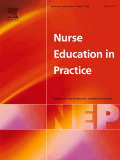
Nurse Education in Practice
Scope & Guideline
Fostering excellence in nursing education and practice.
Introduction
Aims and Scopes
- Interprofessional Education and Collaboration:
Promoting collaborative learning and teamwork among nursing and other health profession students through interprofessional education initiatives. - Simulation-Based Learning:
Utilizing simulation as a teaching strategy to enhance clinical skills, decision-making, and professional competencies in nursing students. - Cultural Competence and Diversity:
Addressing the integration and support of culturally and linguistically diverse nursing students in healthcare education. - Digital Technology in Nursing Education:
Exploring the impact of digital tools, online learning environments, and technology integration in nursing curricula. - Mental Health and Wellbeing:
Investigating the mental health challenges faced by nursing students and the impact of educational interventions on their wellbeing. - Competency-Based Education:
Developing and validating frameworks and assessments to ensure nursing students meet the required competencies for practice. - Research and Evidence-Based Practice:
Fostering research engagement among nursing students and educators to promote evidence-based practice in clinical settings. - Educational Innovations and Pedagogical Strategies:
Examining innovative teaching methods and curricular designs that enhance learning outcomes and prepare students for real-world nursing challenges.
Trending and Emerging
- Mental Health Education and Support:
Increased focus on mental health education for nursing students, including strategies to address stress, anxiety, and resilience, reflecting the growing awareness of mental health issues in healthcare. - Use of Technology and Simulation:
A significant rise in the use of technology-enhanced learning methods, including virtual reality and simulation, to prepare nursing students for clinical practice. - Emphasis on Cultural Competence:
Growing attention to cultural competence and inclusivity in nursing curricula, aiming to better prepare students for diverse patient populations. - Interprofessional Education:
An increasing trend towards collaborative learning experiences that involve multiple health disciplines, promoting teamwork and comprehensive patient care. - Research Engagement and Evidence-Based Practice:
A notable rise in studies focusing on the integration of research activities into nursing education, emphasizing the importance of evidence-based practice. - Competency-Based Education Models:
A shift towards competency-based frameworks that define clear expectations for student performance and outcomes in nursing education. - Gamification and Innovative Learning Strategies:
Emerging interest in gamification and creative pedagogical strategies to enhance student engagement and learning outcomes. - Focus on Professional Identity Development:
Growing research on the development of professional identity among nursing students, emphasizing the importance of self-concept and professional values.
Declining or Waning
- Traditional Lecture-Based Teaching:
As the focus shifts towards more interactive and student-centered learning approaches, traditional lecture formats are being utilized less frequently. - Standalone Clinical Skills Workshops:
There is a waning interest in one-off skills workshops as holistic and integrated approaches to skill acquisition gain traction. - Focus on General Nursing Knowledge:
A decrease in publications centered solely on general nursing knowledge, with a shift towards specialized competencies and advanced practice areas. - Single-Dimensional Assessments:
The trend is moving away from traditional assessment methods towards more comprehensive and formative assessment strategies that capture a wider range of competencies. - Isolated Research on Specific Populations:
Research focusing solely on specific populations or issues without considering broader systemic factors is becoming less common.
Similar Journals
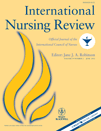
INTERNATIONAL NURSING REVIEW
Elevating Evidence-Based Practice in Nursing.Welcome to the INTERNATIONAL NURSING REVIEW, a premier journal dedicated to advancing the field of nursing through rigorous research and comprehensive analysis. Published by Wiley, this esteemed journal has been at the forefront of nursing scholarship since its inception in 1960 and continues to serve as a vital resource for healthcare professionals, researchers, and students alike. Boasting an impressive Q1 ranking in the miscellaneous nursing category and a prominent position as the 5th ranked journal in General Nursing according to Scopus, it represents the pinnacle of academic excellence with a 96th percentile in its field. Although it is not an open-access publication, the journal’s commitment to high-quality peer-reviewed content ensures that subscribers gain access to the latest advancements, evidence-based practices, and innovative approaches in nursing. With a global reach, the INTERNATIONAL NURSING REVIEW is an essential platform for disseminating research that informs clinical practice and shapes the future of nursing. Join the conversation and explore the breadth of knowledge available from this distinguished publication.

JOURNAL OF CONTINUING EDUCATION IN NURSING
Advancing Knowledge, Enhancing Practice in Nursing.JOURNAL OF CONTINUING EDUCATION IN NURSING, published by SLACK INC, is an esteemed journal dedicated to the field of nursing education and professional development. Since its inception in 1970, it has actively contributed to the growth of nursing knowledge and practice, making it an essential resource for educators, practitioners, and researchers alike. The journal holds a solid standing with an impact factor reflecting its importance, categorized as Q2 in Nursing (Miscellaneous) and Review and Exam Preparation, and Q3 in Education according to the 2023 rankings. With a mission to support ongoing education among nursing professionals, it provides a platform for innovative research, evidence-based practices, and comprehensive reviews that enhance nursing education. The journal is accessible in print and does not currently offer open access options, ensuring exclusivity in its high-caliber content. As it converges into 2024, the JOURNAL OF CONTINUING EDUCATION IN NURSING remains pivotal in shaping the future of nursing education and facilitating professional excellence.
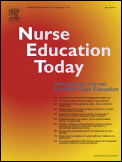
NURSE EDUCATION TODAY
Driving Change in Nursing Education Through Critical Discourse.NURSE EDUCATION TODAY is a prestigious academic journal dedicated to advancing the field of nursing education and practice. Published by Churchill Livingstone in the United Kingdom, this journal has been a vital resource since its inception in 1981, with a commitment to improving the standards and methodologies in nursing training. As evidenced by its impressive Q1 ranking in both Education and Nursing categories in 2023, and a remarkable 96th percentile ranking in Nursing (General Nursing), NURSE EDUCATION TODAY stands out as a leading source of evidence-based research, innovative educational strategies, and critical discussions that shape the future of nursing education. The journal provides a platform for researchers, practitioners, and educators to share their findings and experiences, making it essential reading for all stakeholders in the healthcare education landscape. Although it does not offer Open Access, its substantial impact on the nursing education community is significant, with ongoing contributions up to 2024 and beyond.

JOURNAL OF ADVANCED NURSING
Championing the future of nursing with critical dialogue.JOURNAL OF ADVANCED NURSING is a premier peer-reviewed journal published by Wiley, dedicated to advancing the field of nursing and contributing to the global dialogue surrounding nursing practices and education. With an impressive impact factor, this journal is positioned in the esteemed Q1 category for miscellaneous nursing journals in 2023, reflecting its rigorous standards and the high quality of published research. The journal covers a broad range of topics within nursing, promoting innovative research and critical discourse that informs best practices and policy decisions, making it an invaluable resource for researchers, practitioners, and students alike. With its foundational years dating back to 1976, the JOURNAL OF ADVANCED NURSING continues to uphold a legacy of excellence and impact, currently ranked #7 out of 139 in the Scopus General Nursing category, placing it in the top 95th percentile of nursing journals. Although primarily subscription-based, the journal provides access options that cater to institutions and emerging researchers, ensuring that vital knowledge is disseminated widely within the nursing community.

International Journal of Nursing Education Scholarship
Driving the future of nursing education with impactful research.International Journal of Nursing Education Scholarship is a crucial academic platform dedicated to advancing the field of nursing education through rigorous research and scholarship. Published by WALTER DE GRUYTER GMBH in Germany, this journal serves as a key resource for researchers, educators, and practitioners in nursing and related educational fields. With an impressive impact factor and a strong Scopus ranking, notably Rank #44 in General Nursing, the journal occupies a respected position within the Q2 category in both the Education and Nursing sectors. Its open access policy enhances the dissemination of critical findings, facilitating broader access to high-quality nursing education research. Spanning from 2003 to 2025, this publication is committed to fostering innovation and excellence in nursing education, promoting evidence-based practices that ultimately benefit healthcare systems worldwide. As a vital resource for academia and practice, International Journal of Nursing Education Scholarship continuously encourages the discourse on best practices and emerging trends in nursing education.

Nursing-Research and Reviews
Championing open access to enhance nursing excellence.Nursing-Research and Reviews is a prominent open-access journal published by DOVE MEDICAL PRESS LTD, dedicated to the dynamic field of nursing research. Since its inception in 2011, this journal has served as a vital platform for disseminating peer-reviewed articles, review papers, and original research that contribute to evidence-based nursing practice and education. With an ISSN of 2230-522X, it provides valuable insights into the latest developments and trends in nursing, aiming to bridge the gap between academia and clinical practice. The journal's commitment to open access ensures that its content is readily available to researchers, practitioners, and students worldwide, promoting a broader dissemination of knowledge. As part of a reputable publisher recognized for its focus on advancing medical and scientific understanding, Nursing-Research and Reviews plays a crucial role in shaping the future of nursing through innovative research and inclusive dialogue.
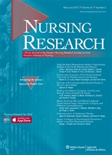
NURSING RESEARCH
Transforming healthcare through innovative nursing research.Nursing Research, published by Lippincott Williams & Wilkins, is a prestigious academic journal dedicated to advancing the field of nursing through rigorous research and evidence-based practice. With an ISSN of 0029-6562 and an E-ISSN of 1538-9847, this journal has been a cornerstone of nursing scholarship since its inception in 1952. Currently ranked in the Q2 category for Medicine (miscellaneous) and in the Q1 category for Nursing (miscellaneous) as of 2023, Nursing Research is recognized for its high-quality contributions to the field and is ranked 38th out of 139 in General Nursing within Scopus. The journal offers essential insights and a forum for the latest research, enhancing clinical practices and informing policy decisions. Although it does not provide open access, it remains highly respected among researchers, professionals, and students alike, serving as an indispensable resource for those dedicated to improving patient care and advancing nursing science. For more information and to access articles, visit Nursing Research.

Advances in Medical Education and Practice
Empowering Educators, Enriching Medical PracticeAdvances in Medical Education and Practice (ISSN: 1179-7258, E-ISSN: 1179-7258) is a prominent open-access journal, published by Dove Medical Press Ltd since 2010, with a specific focus on the evolving landscape of medical education and training. Based in the United Kingdom, this journal aims to disseminate high-quality research and innovative practices that enhance educational strategies in medical and health professions, providing a platform for scholars, educators, and practitioners to share advancements that influence curriculum development, teaching methodologies, and assessment techniques. With impressive rankings in Scopus, positioned in the top quartile of educational journals (Q2 in Education, Rank #517/1543), and a respectable impact in the 66th percentile, it is a vital resource for those invested in enhancing the quality of medical education worldwide. Researchers, professionals, and students will find valuable insights in its comprehensive collection of articles, ensuring they stay at the forefront of advancements in medical education.
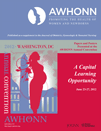
JOGNN-JOURNAL OF OBSTETRIC GYNECOLOGIC AND NEONATAL NURSING
Fostering knowledge in obstetric and gynecologic nursing.JOGNN - Journal of Obstetric Gynecologic and Neonatal Nursing, published by Elsevier Science Inc, is a leading peer-reviewed journal dedicated to advancing the field of nursing in obstetrics, gynecology, and neonatal care. With a ISSN of 0884-2175 and an E-ISSN of 1552-6909, the journal has established itself as a pivotal platform since its inception in 1972, showcasing rigorous research and innovative practices that greatly enhance patient care and nursing education. As evidenced by its 2023 impact factor and impressive Scopus rankings—ranking in the top quartile (Q1) in Critical Care Nursing, Maternity and Midwifery, and Pediatrics, and Q2 in Medicine—it provides invaluable insights for healthcare professionals, researchers, and students alike. The journal’s commitment to high-quality, evidence-based articles reflects its critical role in shaping contemporary nursing practices and informing best practices in maternal and neonatal health. While currently not an Open Access journal, the information disseminated through JOGNN remains vital for those striving to inform their practice and improve patient outcomes worldwide.

Nurse Educator
Fostering Excellence in Nursing Teaching and Learning.Nurse Educator, published by Lippincott Williams & Wilkins, serves as a pivotal resource in the field of nursing education and practice. With an ISSN of 0363-3624 and an E-ISSN of 1538-9855, this esteemed journal has been contributing to the development of nursing professionals since 1976 and is recognized for its impactful articles, reflected in its 2023 Q2 category rankings across various nursing and educational domains. Nestled within the competitive landscape of academic publishing in the United States, its substantial Scopus ranking underscores its significance, particularly in Nursing Fundamentals and Skills (Rank #7/15) and general nursing fields (Rank #52/139). The journal's scope encompasses essential topics pertinent to nurse educators, including pedagogy, clinical practice, and exam preparation strategies, ultimately aiming to enhance nursing education and improve patient care outcomes. By providing an engaging platform for innovative research and best practices, Nurse Educator stands as an essential resource for researchers, educators, and students committed to advancing the nursing profession.